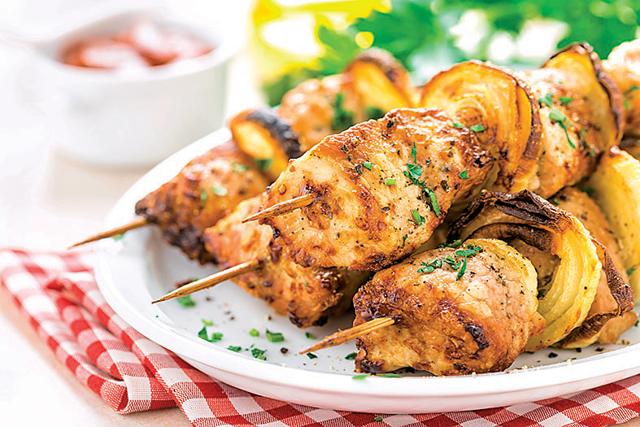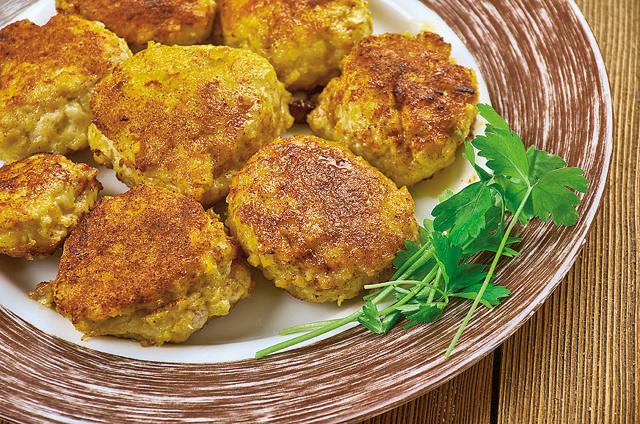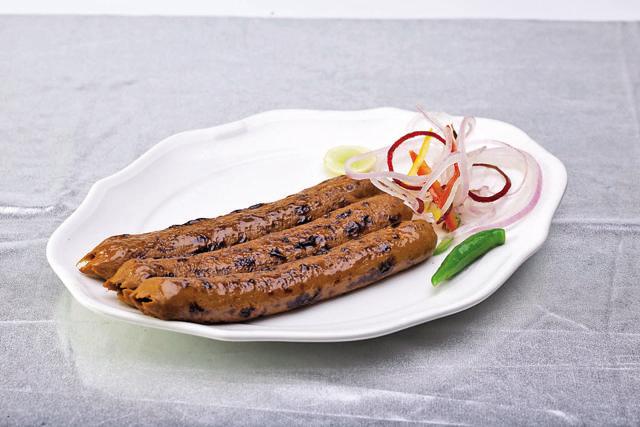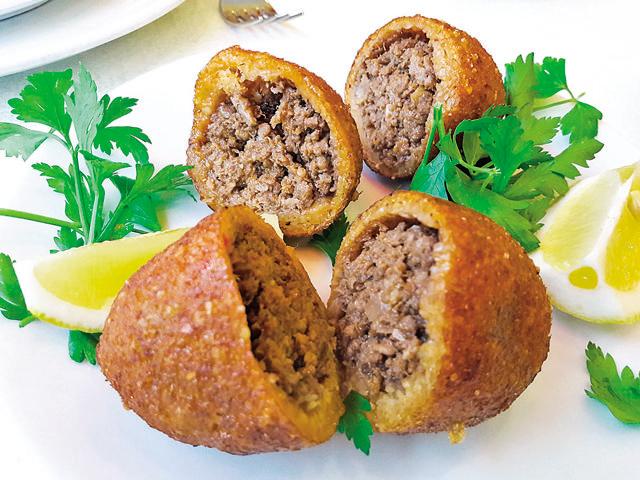A few days ago, in Lucknow, I had my fill of kebabs. As you probably know, they are crazy about kebabs in Lucknow. They don’t just eat them with meals but they serve them as snacks at all times.
I dropped in to the HT’s Lucknow office to see my old friend Sunita Aron and she offered me tea, the usual snacks (wafers, cookies etc.) and more unusually, galawat ke kebab. I can’t imagine any newspaper editor anywhere else in India offering visitors anything quite so elaborate within the confines of her cabin.
The Lucknow tradition is fascinating but it is – sadly enough – dying out in the rest of India. When we speak of kebabs in a generic sense, we don’t realise that the term refers to a variety of dishes, made in different ways and created at different times at different places.
The standard view is that kebabs were created in the Middle East and then brought to India by invading armies and friendlier visitors.
Well, yes and no.
There is no doubt that there is a kebab tradition in West and Central Asia. In fact the word ‘kebab’ is of Turkish and Arab origin. There are many kinds of Middle Eastern kebabs but they usually share certain characteristics. They are made from hunks of meat (or chicken), cut into pieces, and then grilled over an open fire. Often these chunks of meat are impaled on skewers (the shish kebab that you now find all over the world is the most famous example) and then cooked. Occasionally, you will find a minced meat kebab like kibbeh, which consists of ground meat mixed with bulgur wheat but these are not typical of the Arabic kebab tradition.

The conventional wisdom is that these kebabs travelled from the Middle East and came to India in the medieval era. By the time the Delhi Sultanate was ruling, the traveller Ibn Battuta found that kebabs were so common that people even ate them for breakfast in North India.
All this is true. But it ignores another little known fact. We may have had a kebab tradition of our own that emerged long before the Arabs and the Turks arrived with their skewers.
As the food historian Colleen Taylor Sen points out, the currently fashionable view that ancient Indians were God-fearing vegetarians who ate khichri with desi ghee, did their puja and then went chastely to bed, may not be the full story. The Mahabharata and the Ramayana contain references to killing and eating deer. And the banquets described in the Mahabharata seem all-encompassing: “countless dishes of mutton, pork, venison and other meats...” And some of the banquet food would not have seemed out of place in Europe: “large chunks of lamb boiled in different ways... shoulders and roasts of animals dressed in butter, meat cooked as stews, large pieces of meat roasted on spits...”
It is a small step from roasting meat on spits to making kebab-like dishes. And indeed the Manasolassa, a Sanskrit composition from the 11th century, talks about bhaditrakam, a dish made by cutting lamb or goat into small pieces, stringing the pieces on iron skewers and cooking them on hot coals.
There is as graphic a description of cooking kebabs as you are likely to find. Yet, the text is South Indian Hindu in origin, and shows no traces of Middle Eastern influences.
So could it be that in the ancient and medieval eras, people everywhere in the world just found it easy to cut meat, put it on skewers and roast it?
Could this be why we find kebab-like dishes all over Asia and Europe? It wasn’t necessarily that they all had the same Turkish origin. It was just that this was a simple and easy method of cooking.
What is clear, however, is that the Indian Muslim tradition of kebab cooking does claim to be derived from Persian and Turkish styles. But even here, the kebabs of the Middle East have been transformed by exposure to India’s spices. It cannot be an accident that so many of the great kebabs of North Indian Muslim cooking rely on minced meat, which is an ideal vehicle for conveying the flavour of spices. Nor are these kebabs necessarily made on open fires. Many are made on tawas, a style of kebab cooking that is quite distinctively Indian.
This tradition reaches its highest level in Lucknow and the gilawati kebab or the galouti is generally regarded as the pinnacle of culinary achievement.

There are many stories surrounding the galouti’s origins. But most of them rely on the same legend. A toothless nawab found that he could no longer chew meat. So his chefs created the melt-in-the-mouth galouti for him to eat. A second, slightly less popular legend, has the nawab throwing a party at which the British Resident complains that a kebab is not tender enough. So the chefs are dispatched to create something softer and the galouti is born.
The legend changes depending on who is telling the story. The Tunda kebabwallas of Lucknow say that their family invented the kebab. This is hotly disputed by others who say that the dish was created during the Moghul era.
Matters are further confused by the galouti’s rivalry with the kakori, often called the King of Kebabs. If you have eaten a kakori you will know that it shaped like a seekh kebab, contains a thin membrane which encases delicious, meltingly rich minced meat.

The consensus is that the kakori is the more difficult kebab to make because the raw mince mixture has to stay on the skewer (not easy to do with such a rich concoction) and the cooking must be flawless, with the flame just the right distance away from the kebab so that a perfect membrane forms.
A galouti, on the other hand, merely has to be shaped into a patty, put on the tawa and shallow fried. But because both kebabs have a similar texture, the legends about them are transferable. The same stories about the toothless nawab and the British officer who wanted a tender kebab also surround the kakori’s creation.
I asked Ranveer Brar, one of India’s most cerebral chefs, who has apprenticed with Lucknowi masters, what he thought the differences between the two kebabs were. Ranveer said there were basic differences in origin. The galouti came from Faizabad and was older. The kakori came from the village of Kakori and is of more recent origin. Further, said Ranveer, the point of a galouti is the gilawat or the tenderising of the meat by adding papaya to break down the fibres. A kakori mixture, on the other hand, has cashew paste, khoya (sometimes) and added fat (usually from the kidneys) to give it the rich, melting quality that characterises the kebab.
Khoya is not an integral part of the recipe of course. Manjit Gill says that the classic Dum Pukht Kakori does not use it and attributes the texture of the ITC kebab to more massaging of the meat and longer fermentation; there is no one standard kakori recipe.
And yes, the galouti is easier to make which is why you will find it served all over India, while the kakori is much harder to get right.
The UP kebab tradition relies not just on techniques, but also on spicing. Most chefs will claim that their galoutis or kakoris depend on a secret masala mix which they will never part with. This too is a peculiarly Indian quirk. Nowhere else in the world do kebabs depend so much on secret spices.
But there is another kebab tradition and that’s the one that is on the ascendant these days. While the kebabs of the Middle East tend to be roasted chunks of meat, they don’t usually use an oven.

But there is a Punjabi style of kebab-making, invented in Peshawar in the 20th century, that depends on the tandoor (used till that point mainly to bake breads).
It is this tradition that gives rise to dishes unknown in the Middle East or even in Lucknow: tandoori chicken, barrah kebab, chicken tikka etc. These kebabs/dishes don’t require any secret masalas and are relatively easy to make. Perhaps that is why they have spread all over India and now, the world.
In Lucknow (and in Hyderabad a month ago) I was startled (and a little sad) to see that tandoori dishes vastly outnumbered the local kebabs on most restaurant menus, even at those places that claimed to serve the local specialties.
There is a vaguely Hindu-Muslim angle to this – tandoori kebab cooking was invented by Hindus while the tawa kebab tradition is Muslim – but more significant is the Punjabi factor. All of the now globally famous kebabs of Indian cooking were invented by Punjabis. No nawab had ever heard of a tandoori chicken tikka (and had not even dreamt that a dish like butter chicken could be invented using tomatoes and chicken tikka).
I have nothing against the Punjabification of India (or the world, even) but I can’t help feeling a little sorry that the great indigenous, delicately spiced, melt-in-the-mouth kebab tradition survives only in Lucknow and a few other places.
After all, there are times when one prefers the refinement of good poetry to the shoulder-shaking delights of the Bhangra.
From HT Brunch, July 22, 2018



